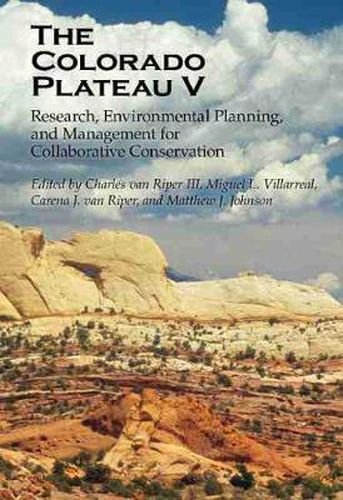Readings Newsletter
Become a Readings Member to make your shopping experience even easier.
Sign in or sign up for free!
You’re not far away from qualifying for FREE standard shipping within Australia
You’ve qualified for FREE standard shipping within Australia
The cart is loading…






Roughly centered on the Four Corners region of the southwestern United States, the Colorado Plateau covers some 130,000 square miles of sparsely vegetated plateaus, mesas, canyons, arches, and cliffs in Arizona, Utah, Colorado, and New Mexico. With elevations ranging from 3,000 to 14,000 feet, the natural systems found within the plateau are dramatically varied, from desert to alpine conditions. This volume, the fifth from the University of Arizona Press and the tenth overall, focuses on adaptation of resource management and conservation to climate change and water scarcity, protecting biodiversity through restructured energy policies, ensuring wildlife habitat connectivity across barriers, building effective conservation networks, and exploring new opportunities for education and leadership in conservation science. An informative read for people interested in the conservation and natural history of the region, the book will also serve as a valuable reference for those people engaged in the management of cultural and biological resources of the Colorado Plateau, as well as scientists interested in methods and tools for land and resource management throughout the West.
$9.00 standard shipping within Australia
FREE standard shipping within Australia for orders over $100.00
Express & International shipping calculated at checkout
Roughly centered on the Four Corners region of the southwestern United States, the Colorado Plateau covers some 130,000 square miles of sparsely vegetated plateaus, mesas, canyons, arches, and cliffs in Arizona, Utah, Colorado, and New Mexico. With elevations ranging from 3,000 to 14,000 feet, the natural systems found within the plateau are dramatically varied, from desert to alpine conditions. This volume, the fifth from the University of Arizona Press and the tenth overall, focuses on adaptation of resource management and conservation to climate change and water scarcity, protecting biodiversity through restructured energy policies, ensuring wildlife habitat connectivity across barriers, building effective conservation networks, and exploring new opportunities for education and leadership in conservation science. An informative read for people interested in the conservation and natural history of the region, the book will also serve as a valuable reference for those people engaged in the management of cultural and biological resources of the Colorado Plateau, as well as scientists interested in methods and tools for land and resource management throughout the West.